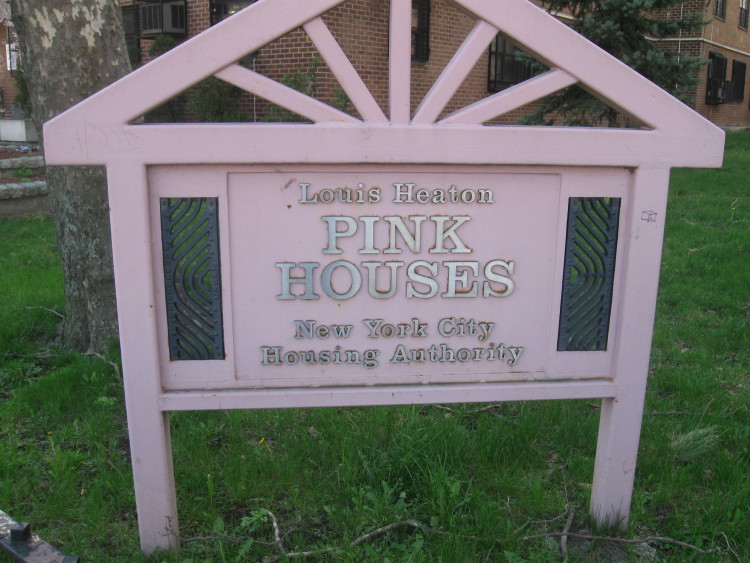“Don’t ever go to Pink Houses by yourself, Peg.”
The stern warning came from Mike, a 20-year NYPD officer who was helping me research my book, Little Peach, the story of a young girl from Philadelphia who becomes the victim of a sex trafficker. It was after midnight, and we were driving around the eastern reaches of Brooklyn – the blocks too far to be gentrified by white Manhattanites – in his unmarked police vehicle. Mike was a veteran street cop. Like many of his colleagues, he was born and raised in the leafy suburbs of Long Island. When I asked him what he considered to be the most dangerous housing project, without hesitation, he answered, “Pink Houses.”
“Take me there,” I said. And he did, pointing out the fast food spot on the corner of Crescent Street and Linden Boulevard where a gang-related shooting had taken place when Mike was still a rookie. He recalled the intense drug activity that took hold here in the ‘90s, as it did in so many places across America. He drove cautiously, as if we were behind enemy lines – no longer in our shared America, but in some “other” country, a far more sinister country where, at any moment, we might be attacked.
It was a warm city night. People walked along sidewalks, appeared in open windows, and sat out on benches. As I watched Mike watch the scenes outside our window, his eyes and posture were that of a soldier: of someone who had been trained to enter this particular space anticipating violence.
We did not stay long. We did not get out of the car.
The next morning, I returned to Pink Houses by myself. It was a weekday in early summer, around 10:00 a.m. What I remember most was how green the young grass looked. I also remember the sound of little kids laughing in the sunlit playground of a daycare center nearby. I watched older women – grandmothers, I imagined – pushing their carts of groceries. Someone had fenced off a small plot of earth with a sign that says “Pink’s Garden of Love.”

Does crime exist here? Yes. So does poverty, and a broken school system, and a broken economy, and zero services, all the institutional racism that has isolated communities just like these for years and years and years.
The night before, through the eyes of an NYPD officer, these streets had been approached as something akin to Baghdad.
Sitting on that bench by myself, I saw families. Americans. Kids. I saw mothers. And I saw young men like Akai Gurley, who, a year later – on the night of November 20. 2014 – stepped out into the unlit stairwell of a Pink Houses apartment building with his girlfriend. Coming up those unlit stairs was a rookie cop named Peter Liang. Liang had not been trained in CPR. He was a year out of the academy, and though he was performing a routine patrol with no threat facing him, he had his weapon out.
He was not supposed to have his weapon out.
Startled by a loud noise, he said, Liang accidentally fired his gun just as Akai entered the stairwell; the bullet hit the wall, then hit Akai. He did not die instantly, but bled out after climbing a few floors up to safety. His girlfriend administered CPR until Akai died in her arms.
These are the years of Ferguson. The stories of unarmed blacks killed by police officers have become monstrously routine: Michael Brown, Freddie Gray, Tamir Rice, Eric Garner. Too many names. Too many.
But unlike these other cases, Liang stood trial and was found guilty of second-degree manslaughter by a jury of his peers.
Then last night, April 19, 2016, word came that Liang will serve no jail time – a decision made by the judge overseeing the case. This was, according to our justice system, a tragic accident.
Just another accident.
I think back to the night my friend Mike warned me, “Don’t ever go to Pink Houses alone, Peg.” I think about the fear, the soldier-like demeanor Mike assumed. I think of the harsh language used by the other officers I met to describe places like Pink Houses and – more importantly – the people who live there.
Liang was a rookie cop with his gun out for no good reason – aside, of course, for his own terror, his combat-like training, his expectation that at any moment, he might be attacked.
“Don’t ever go to Pink Houses by yourself, Peg.”
What a terrifying statement. Pink Houses must be the most dangerous place in New York. And yet, here we are again, with another innocent person in the ground, whose death-by-gunfire will see no justice.
That night, for Akai Gurley, the danger was not Pink Houses, but the officer charged with keeping its residents safe.
[about-author]


Beth W
When cops are armed and trained like soldiers, taught that every escalating scenario is life-threatening (either deliberately or by the subtle implications in society), and primed with the expectation that underprivileged neighborhoods are ‘enemy territory’, this is what we get. And what’s even sadder is that here in Washington state, this is the first I’ve heard of the tragic death of Akai Gurley, and the privilege to murder that Liang has been granted, I suppose because of his job. Thanks for sharing this author’s story, and educating those of us in the dark about this.
Carina Olsen
So so so much awful stuff happens all the time. Shudders. Thank you for sharing this story. <3 Lovely post, as always.